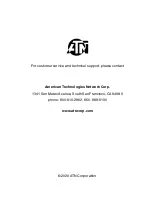
2-30
2-31
NOTE
The purpose of the IR source is for viewing at close distances
up to 3 meters when additional illumination is needed.
(1) Turn the power switch knob and rotate clockwise to the IR posi-
tion. With the goggles held to the eye, observe that a red light ap-
pears in the eyepiece. This indicates that the IR source is operating.
(2)
Auto Mode
The automatic mode is different from the “IR” mode, and the au-
tomatic mode starts the environment detection sensor. It can detect
environmental luminance in real time and work with reference to
illumination control system. Under extremely low or extremely dark
environment, The system will automatically turn on infrared aux-
iliary lighting, and when the environmental illumination can meet
normal observation, The system automatically turns off “IR”, and
when the ambient illumination reaches 40–100 Lux, The whole sys-
tem is automatically shut down to protect the photosensitive core
components from damage by strong light.
2.4.4.1. Auxiliary Battery Installation (optional)
FIGURE 2.20. AUXILIARY BATTERY INSTALLATION
POWER CORD
BATTERY HOLDER
(1) Install (4) CR123 batteries into the battery holder.
(2) Attach the battery holder to the rear of the helmet or headgear.
(3) Run the power cord from the battery holder to the NVG.
(4) Plug the power cord into the NVG (Figure 2.21).
FIGURE 2.21. POWER CONNECTOR
POWER CONNECTOR
(5) Turn the NVG on.
2.4.5. PREPARATION FOR STORAGE
(1) Shutdown. Perform the following procedures to shut down the
goggles.
(a) Turn the goggles power switch to the OFF position.
(b) Remove the goggles from the headmount or helmet mount.
WARNING
Do not carry batteries in pockets containing metal objects
such as coins, keys, etc. Metal objects can cause the batteries
to short circuit and become very hot.
(2) Packaging after use.
(a) Remove battery cap and remove battery.
(b) Inspect the battery housing for corrosion or moisture. Clean
and dry if necessary.
(c) Replace the battery cap.
Summary of Contents for ATN PS31
Page 5: ...iii 1 1 CHAPTER 1 INTRODUCTION ...
Page 11: ...2 1 CHAPTER 2 OPERATING INSTRUCTIONS ...
Page 28: ...3 1 CHAPTER 3 MAINTENANCE INSTRUCTIONS ...
Page 32: ...Notes Notes ...



























